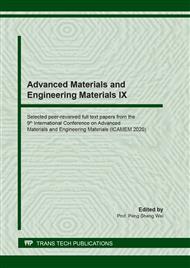p.491
p.499
p.509
p.514
p.519
p.524
p.529
p.534
p.540
Mathematical Modeling of the Magnetic Field Effect on Molten Iron Crystallization
Abstract:
The aim of the study is to construct a mathematical model to describe the effect of a magnetic field on the melt crystallization, in particular cast iron. The authors’ research is based on the hypothesis of the certain energy function existence in the short-range order region, which describes the equilibrium state of the "fluid - short-range order" thermodynamic system. Using the hypothesis, we simulated the effect of a magnetic field on the melt crystallization process, which is based on the fundamental laws of statistical physics and thermodynamics and includes four components: a model of the stationary state of the short-range order region, a model for determining the energy function of the short-range order region, a model of the effect of a proportional magnetic field, a model the effects of a commensurate magnetic field on the crystallization of molten iron. Being based on the simulation results, test calculations were performed, the results of which are confirmed by previously known studies. The simulation results showed that the influence of a magnetic field on the crystallization of melts is insignificant in comparison with thermal motion. The authors of the work believe that the magnetic field acts on the region of short-range order at the formation time at a fluctuation temperature that is much lower than the equilibrium one.
Info:
Periodical:
Pages:
519-523
Citation:
Online since:
September 2020
Price:
Сopyright:
© 2020 Trans Tech Publications Ltd. All Rights Reserved
Share:
Citation:


